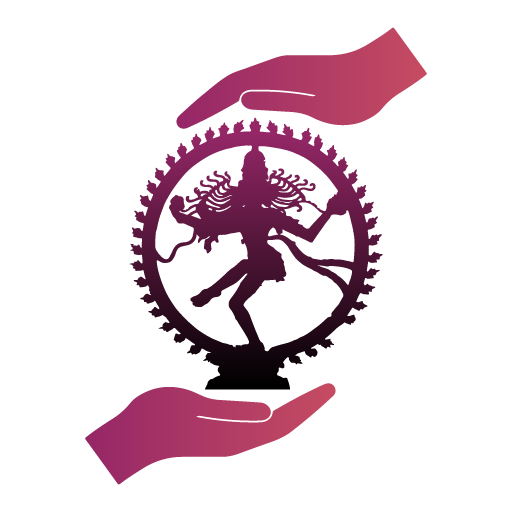Easter - Harbinger of New Life and Hope
Easter is for Christians what a heart is to our body. Though the glitz, glamour, and gaiety of Christmas give it a higher popular rating, the essence of Christianity lies in Easter. The Resurrection of Jesus Christ is the foundation of Christianity and this is what Easter is all about.

“Resurrection of Christ” a painting by Italian artist, Noël Coypel, 1700 CE
Spring is symbolic of rebirth, new life, and hope. So, it is only natural to celebrate the Resurrection of Jesus at this time of the year. The etymology of the term “Easter” can be traced back to the name of a pre-Christian goddess in England, Eostre, who was worshipped at the onset of spring. The only reference to this Goddess comes from the writings of the Venerable Bede, a British monk who lived in the late 7th and early 8th centuries. His writings were so influential for later Christians that the name stuck, and Easter remains the name by which the majority of the Christians, the world over, refer to the festival of Jesus's resurrection. However, unlike Christmas, the date of Easter varies from year to year. This is primarily because Easter always falls on the first Sunday after the first full moon following the spring equinox.
With time, numerous traditions and symbols have been attached to Easter.

Easter eggs in all hues
The familiar sights of the Easter bunny and Easter eggs serve as a reminder of the holiday’s very ancient origins outside of the Christian tradition. Eggs depict new life. Decorated eggs have been a part of Easter celebrations since time immemorial. The process of decorating them is very elaborate. Initially, red was the only colour used. Today, a variety of colours are witnessed. The traditions that began in East European countries, are now popular all across the world. Easter Bunnies or hares too are integral to Easter. Hares (amongst many other animals) give birth in spring, and spring in turn is associated with new life and rebirth. In due course, lamb and lilies too began to be associated with Easter. Lambs have been mentioned in many Biblical passages as symbols of sacrifice. For Easter, they represent Jesus’ sacrifice for the sins of mankind. Lilies are perceived as a symbol of purity and innocence.

Easter lilies: pure and peaceful

Feasting at Easter
Celebrations always call for special food, drink, new clothes and a lot of joy and merriment. Easter is celebrated the world over and each region follows its own traditions, customs and beliefs. In India, Easter is celebrated with deep religiosity and great fanfare. In some states like Maharashtra, Kerala, Goa, and the region of North East India, feasting in the form of lavish breakfasts and lunches are the highlight of the festival. In fact, feasting on the occasion of Easter is all the more significant as it comes after 40 days of abstinence and fasting. Though the meals differ from state to state, meat is generally present in the preparations in some form or the other.
We will now take a look at the food traditions of three important regions of India where the festival of Easter is celebrated with great pomp and gaiety- Kerala, Goa and North-East India.
Kerala
The cuisine of Kerala is characterized by the use of coconut- be it chopped, grated or ground. Even the medium of cooking is predominantly coconut oil. In the Christian households of Kerala, there is no feast without the exquisite Appams. It is the perfect accompaniment to all the main courses and the combined taste lingers long after the festival is over. Made essentially from very fine rice flour and coconut milk, the batter is left to ferment overnight. Appams derive their shape from the small and shallow pan they are cooked in. They are soft and lacy and it takes some practice to make a perfect one.

The ubiquitous Appams

Vattayappams: a must at Easter
Vattayappam is yet another favourite of the occasion and its origin itself lies in the Christian community. Made of rice flour, it is essentially a thick batter that is fermented with yeast and sugar. Once blended, it is poured into round containers and steamed. Vattayappams are similar to their counterpart- the Appams, and are eaten either as stand-alone meals or as accompaniments. In Kerala, one of the staples of Easter is the Roast- be it Chicken, Duck, or Turkey. Kerala is home to some of the finest spices in the world. For the marinade, the spices are first dry-roasted and then powdered. It’s very important to marinate the chicken/duck/turkey beforehand and give at least one hour of resting before it reaches the oven. Kerala’s ubiquitous sweet Tender Coconut Pudding has often been described as a soft piece of heaven that melts in the mouth! Made out of coconut water and scrapings of tender coconut, this dessert is a fitting finale to the feast. The robust taste of coconut is very unique and exotic. It is a dessert with a remarkably high nutritional content that is also light on the stomach. The Goans have their version of this dessert too.
Goa
Christianity in Goa has roots in Portugal and hence the Goan cuisine borrows a lot from European kitchens. A good example of such culinary techniques is using alcohol to soften meat. When it comes to Goa, there can be no Easter without pork. Be it Sorpatel, or Vindaloo, or a Pork Roast, nobody can beat the Goans at these exquisite preparations. Every dish of the state has four important elements: sweetness, sourness, spice, and salt. Christians use vinegar to get a tangy flavour. Today, Goan food is a blend of the old and the new, the native culture and the foreign influence. Popular Easter dishes of the Goan cuisine include the Pork Vindaloo that has been adapted from the Portuguese dish Vinha de Alhos (meaning wine vinegar and garlic), Fish Recheado (meaning stuffed in Portuguese), Xacuti, Chicken Cafreal (named after the African soldiers or kaffirs), Prawn Balchao (a dish supposed to have originated in Macau) and Pork Sorpotel (an Easter and Christmas special).

Roasts for Easter

Tender Coconut Pudding: a melt-in-the-mouth delicacy

Sorpatel

Goans love their pork at Easter
North-East India
In the North-Eastern states of Nagaland, Mizoram and Meghalaya, which have a sizeable Christian population, Easter celebrations are full of pomp and gaiety. In Nagaland, the Awoshi Kipiki Ngo Axone is a special pork curry that is a part of the Easter feast. This pork preparation is a masterpiece of aromas and taste, with the usage of only six ingredients namely - smoked pork, soya bean, dried red chilli, powdered mejenga seeds and chopped ginger. Akhuni or a piquant fermented soya bean and Anishi or fermented yam leaves are other popular preparations. In Mizoram, Easter is more of a community festival, where all gather in one place to worship and celebrate. Vawksa Rep is a chewy meat dish that is prepared with seasoned pork, chillies, and fresh leafy greens. This delicacy is a regular for Easter. In the state of Meghalaya, Easter celebrations are accompanied with traditional delicacies like Pork with Bamboo Shoot and Jadoh Rice.

Naga Smoked Pork with Axone
Celebrated the world over, Easter truly encapsulates and celebrates the most important part of Jesus Christ’s life- the sufferings that he underwent for humanity. However, though the essence of the festival remains the same, its celebration differs across different cultures. While some communities have elaborate celebrations that involve processions and tableaux, others focus more on attending mass and singing songs. The one common element in all the versions of the festival is that of feasting. Easter is a day that witnesses lavish feasts; an event that sees a variety of traditional dishes being cooked and served. It is a festival that brings the Christian community together to pray and feast alike.

Easter, bringing hope and new life
 Government of India
Government of India

































 Recognizing the ongoing need to position itself for the digital future, Indian Culture is an initiative by the Ministry of Culture. A platform that hosts data of cultural relevance from various repositories and institutions all over India.
Recognizing the ongoing need to position itself for the digital future, Indian Culture is an initiative by the Ministry of Culture. A platform that hosts data of cultural relevance from various repositories and institutions all over India.